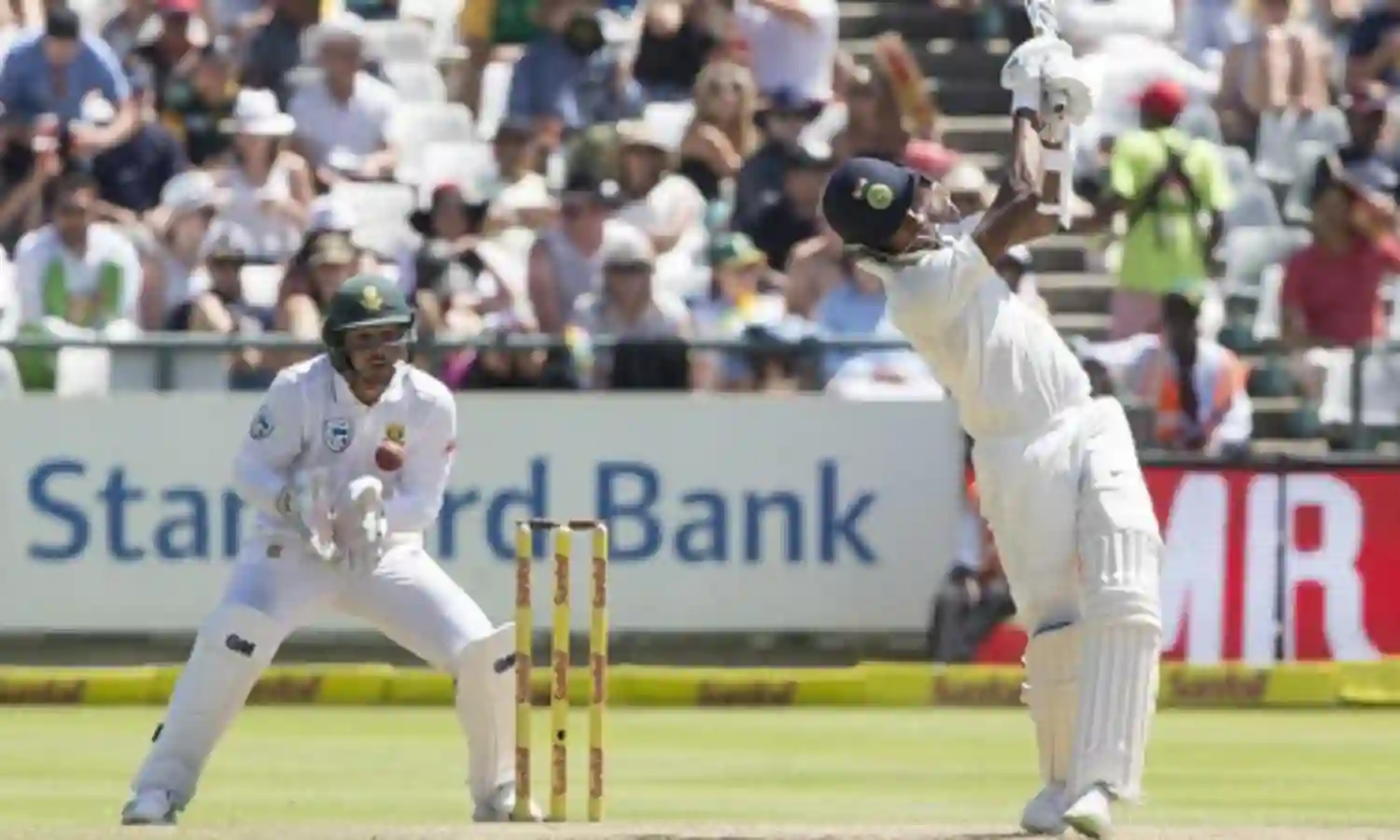A Diary: Cape Town Screamed At Batsmen To Counter-Attack
It was a horror stroke from monk-like Pujara

Cheteshwar Pujara appeared to be in a bubble. His hands were moving carefully, playing with soft hands, manoeuvring the ball ever so slightly into the leg-side. The off-side did not exist to him. He had scored a meagre two runs on the off-side off the 92 balls he had faced in the game. No,he wasn't a leg-side player. Playing on the off-side where a pack of wolves awaited in the slip cordon was suicide against a rampaging South African four-pronged attack.
Just 26 runs came off his bat before lunch on day 2, but importantly he had negotiated the South African seamers and showed the temperament and composure to grit it out in the middle. The knock was worth applauding. Surely, he would build on this start and make a big one for India, assumed the fans. Only, it didn't materialise.
First ball after lunch, the monk-like Pujara, who had left a zillion balls in the corridor outside the off-stump, carelessly wafted at a wide ball from Philander to the slips. It was a horror stroke from India’s most composed batsman of the morning session.
***********************
Hardik Pandya, with all his swagger and a World of confidence behind him, walked out for his debut innings at Newlands. India were in a pool of trouble having lost the cream of their top-order. They needed Pandya to lift them from the abyss like he did at the Champions Trophy, minus the horror run-out of course.
First ball, Pandya chased a wide delivery and nearly nicked Vernon Philander to the slips. It ran away to the fence and Pandya was away. Dale Steyn teased and probed his technique outside the off-stump. Morkel and Rabada questioned his temperament and maturity against a short ball barrage. He did not back down. He religiously followed his skipper's mantra of 'fighting fire with fire’.
When Philander landed it fuller, Pandya offered a straight bat and lifted it over mid-off, not bothering to keep it down and sending it soaring over the mid-off fielder. The effects showed two balls later when Philander, who on his day would land 99/100 balls in the very same area, bowled shorter and Pandya blasted the cut to fetch four more. A further two balls later, he was stepping down the track, an evident spring in his steps, and lambasted Philander through mid-wicket. It wasn't about finding the meat of the bat. It wasal about showing intent and pushing South Africa's relentless four-pronged attack onto the back-foot.
95 balls later (just three more than Pujara batted), he had played a slew of ramp shots, ugly hoicks, pulls and slashes, survived a dropped catch and a stumping. But importantly, he had 93 runs to his name as against Pujara's 26.
Perhaps the land of the Table mountain screamed out to attack. Why else would AB de Villiers, out of action from Test cricket for an year and with one four-day Test under his belt walk out to the middle with South Africa at 12/3 and bludgeon India’s bazigaar-in-chief, Bhuvneshwar Kumar, with outrageous shots on the off-side.
That 17 run over virtually trumped every single one of Hardik Pandya's outrageous strokes. It was catching a situation by the scruff of its neck and pulling it so hard so as to tilt the balance of the game. The Superman was a master at it but despite his 360° skills, he is a conventional Test batsman. At Newlands he opted to go the counter-attacking way.
*********************************
When Ben Stokes walked out to bat at Newlands in January 2016, he was nothing more than a big hitting all-rounder. He wasn't touted to loft England from 167/4. But in the company of Johnny Bairstow, Stokes walked all over South Africa. Their 399 run association not only showed that the Durham all-rounder had arrived as a Gets cricketer but also underlined the importance of counter-attacking in Test cricket.
The format is often talked about as the conventional one, where batsman are expected to show steely composure and tenacity. But sometimes, a detour from the ordinary is needed when the opposition boasts of a bowling attack that can decimate opposition with a mere glance.
Stokes’ 258 came in a 198 balls and was studded with some outstanding shots all around the wicket. Bairstow didn't hold back either. The wicket-keeper batsman smashed a 150 at a strike rate of 75+ and their counter-attack did enough to push South Africa to a corner.
Pandya may not be in the old school league of Test cricketers and may not even be called to the annual meetings of Test stars after his retirement (if ever there was one) but on Saturday he questioned the common notions, went against it and found success. If not for him, India would not even have been able to show that they meant business here in a land where they are yet to strike rich in terms of results.



